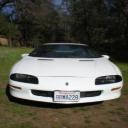Yahoo Answers is shutting down on May 4th, 2021 (Eastern Time) and beginning April 20th, 2021 (Eastern Time) the Yahoo Answers website will be in read-only mode. There will be no changes to other Yahoo properties or services, or your Yahoo account. You can find more information about the Yahoo Answers shutdown and how to download your data on this help page.
Trending News
What is the use of filling nitrogen gas in tyres instead of compressed air?
Will we get more mileage, comfortable riding etc while using nitrogen in tyres instead of compressed air
4 Answers
- Howard LLv 71 decade agoFavorite Answer
It's basically a marketing ploy to get some extra money from you. There are benefits from using nitrogen but they are so slight it's really not worth the money on a car tire. Aircraft use nitrogen in the tires to prevent moisture from freezing at high altitudes. Race cars use nitrogen filled tires to keep tire pressures more stable. The fact that nitrogen does have benefits in tires exposed to extreme temperatures and forces gave marketeers an opportunity to sell it to the public.
Nitrogen molecules are larger than oxygen so in theory there will be less leakage over time, but plain air is 78% nitrogen so the benefit of replacing the other 22% is virtually nothing. If your tire and wheel have a good seal they will go for months without losing any pressure. If the seal is bad it will lose pressure with nitrogen as well.
Air contains oxygen and moisture which degrades the rubber in a tire over time so filling the tires with nitrogen is supposed to prolong the life of tires. But the outside of your tires is exposed to air all of the time. The tire will degrade from dry rot on the outside long before it does from the inside even using plain air to fill them. In most cases the tire gets replaced when the tread wears out long before the the tire rots.
- 1 decade ago
Dear friend
Reason for filling nitrogen gas now a days is as under;
1. Compressed air has a tendency to expand in its volume and pressure when it is hot. example when you are travelling in a bus, observe the wheels when it stops for tea break. Then you can feel hot wheels.
2. Since the wheels are hot its original pressure increases. At this condition any puctures put on the tube tries to open
3. As the tyre pressure increases more pressure creates hard tyres and makes inconvenience.(This you may not feel)
4. Tubes inside the tyres locks to the tyres and makes difficult when opened for any puncture . This is due to oxygen in the air which makes rusting of wheel rim
Now the nitrogen gas answers to the all the problems hence now entering into the automobiles 2nd thing now adays you can see all the vehicles speeds are higher than the olden days.
- Country BoyLv 71 decade ago
Manufactured pure nitrogen is an inert gas. There's no water or dirt which degrades the rubber inside the tire which also corrodes and rusts the inside of the wheel. With today's standard automotive tire pressure indicators, nitrogen is a lifesaver. The molecules are larger so they don't leak-off past valve stems and tire beads as fast. It isn't as heat sensitive as water dirt and water ladened air that you get at convenient stores, tire shops, car dealers and gas stations. Nitrogen tire pressure is much more stable in cold and heated conditions. If people knew how shiftless the owners of commercial air compressors were as far as draining the standing water from the pressure holding tanks, they'd quit using regular air today.
Howard is missing the important point that dirty wet trapped air inside tires acts as a pressure cooker. When they get hot regular wet air shortens the life of the tires from the inside out. It's also Howard's opinion (not a fact) that nitrogen is a marketing ploy as far as tire inflation.
I had four new Yokohama TRZ tires installed on my wife's 04 SE Camry three years ago. The tires were inflated with nitrogen @ 40 PSI. Today the pressures are at 35 PSI without having added one pound of nitrogen in three years.
You're going to say: I cheated with the original tire pressure. Not really! The tires indicate the maximum pressure can be a maximum of 45 PSI. The car drivers door post says 29 PSI. The Toyota dealer had been inflating the original terrible Bridgestone RE-92 tires @ 35 PSI. I personally don't like a mushy floppy ride that chews up the inside and outside of the tire tread. 29 PSI. Is ridiculous.
Source(s): Alignment, suspension and brake shop. - Mr. KnowItAllLv 71 decade ago
Less expansion and contraction in extreme environments.
(more stable tire pressure) -46 degrees F. to +120 Deg.






